अनुवांशिक रूप से संशोधित फसलों का पता लगाने के लिए पार्श्व प्रवाह इम्यूनोएसे
The development technologies in genetic engineering give rise to genetically modified organisms (GMOs). Genetically modified (GM) crops have become a reality in agriculture, food and feed market.
Genetic engineering includes – insect resistance, herbicide tolerance, drought and salt tolerance, improved colors in fiber and flower crops, resistance to water logging and longer shelf-life.
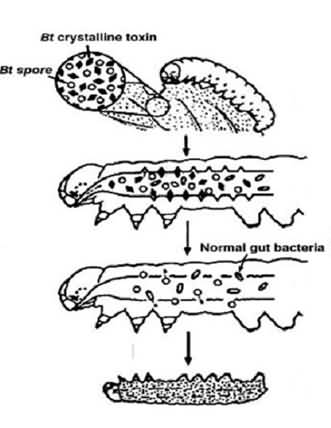 The genetically modified (gm) crops have contributed to the successful incorporation of different traits by introducing transgenes such as bacillus thuringiensis (bt) insecticidal genes (cry1ab, cry1ac, cry1f, cry2ab, cry3a, vip3), herbicide tolerant genes (cp4epsps, bar, pat, als), virus resistant (cp, prsv-cp, rep, hel), delayed ripening genes (sam-k, acc, pg), genes for color modification.
The genetically modified (gm) crops have contributed to the successful incorporation of different traits by introducing transgenes such as bacillus thuringiensis (bt) insecticidal genes (cry1ab, cry1ac, cry1f, cry2ab, cry3a, vip3), herbicide tolerant genes (cp4epsps, bar, pat, als), virus resistant (cp, prsv-cp, rep, hel), delayed ripening genes (sam-k, acc, pg), genes for color modification.
B. thuringiensis and Cry protein toxins are efficient, safe and sustainable alternatives to chemical pesticides for the control of insect pests.
The toxicity of the Cry proteins have traditionally been explained by the formation of trans membrane pores or ion channels that lead to osmotic cell lysis. The protein targetsthe major pests of cotton, tobacco, tomato, potato, corn, maize and rice.Mode of action of the crystal toxin on susceptible larvae involves
- ingestion of the crystalspore cell complex
- solubilization on th e midgut by the alkaline pH
- processing of the 51 and 42-kDa proteins to 43 and 39-kDa proteins
- binding of toxin proteins to cells of the gastric cecum and posterior midgut
- exertion of a toxic effect
GM crops approved for cultivation in world are tomato (delayed maturity), potato (resistance to insect or virus), squash (resistance to virus) , papaya (resistance to virus), sugar beet (tolerance to herbicide), sunflower (tolerance to herbicide), tobacco (quality), wheat (tolerance to herbicide), melon (delayed maturity), rice (tolerance to herbicide), chicory (tolerance to herbicide) and carnation (flower color, long-life).
A rapid test, suitable for on-farm use, for the detection of cry protein provides a tool for farmers to monitor and identify best practice.
Lateral flow test serves for quick, easy, inexpensive to detect protein. World agriculture must continue to fulfill the food and fibre needs of the growing human population as well as rectify the existing widespread malnutrition.
To achieve this aim, pest control will have to rely on integrated pest management practices which depends on biological control.
GMO testing by Lateral Flow method
Post-commercialization tracking of GM crops requires three types of tests. A rapid detection assay to determine whether a GM crop is present in a sample of raw ingredients or food products; an identification assay to determine which GM crop is present; and quantitative methods to measure the amount of GM material in the sample
The first stage can be accomplished by qualitative methods (presence or absence of trans-gene), whereas the third stage uses semi quantitative (above or below a threshold level) methods.
Currently, the most important approaches in immunological assay using antibodies that bind to the novel proteins unique to the GM crop known asLateral Flow method.
GMO detection by strip test (also called a lateral flow device or dipstick). Lateral flow strips, also known as immuno strips, are designed to quickly determine the presence or absence of genetically modified traits expressed in transgenic corn, cotton, and soybeans. They are relatively inexpensive and simple to use.
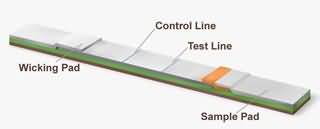
Strip tests are thin strips comprised of a nitrocellulose membrane covered by a sample pad on one end and a wicking pad on the other end. The sample pad is submersed in a solution of homogenized test sample.
The solution wicks up the nitrocellulose membrane on the strip, causing the fluid to pass over an area containing an excess of gold-labeled antibody specific to the GMO protein being tested.
- Lateral flow strips detect protein extracted from individual leaf tissue, single seed tissue, or from a ground bulk seed sample
- The strips are placed in the extraction solution, the liquid is wicked up the strip, carrying proteins across protein-capturing regions
- Lateral flow strips contain an upper control line and a lower test line.
- The control line will appear within 3-5 minutes.
- The sample is positive for the trait, the test line will also appear.
- The sample is negative, the test line will not appear.
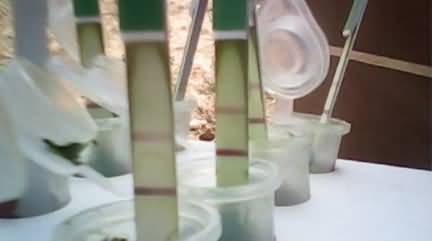
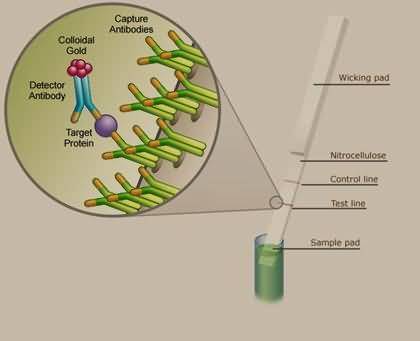
Lateral flow immunoassay
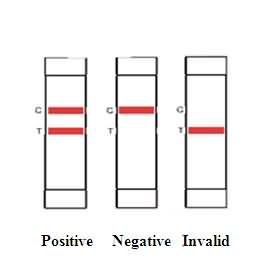
Conclusion
The lateral flow immuno assay is economical, more amenable for sale application, and suitable as an initial screeningof GM crops.
Thestrips developed commercially to detect endotoxins expressed by Bacillus thuringiensisto protect against insects. Commercially available lateral flow strips are currently for GM products, can be used to detect multiple proteins are being developed.
Authors:
Dr. A.G.Rajalakshmi
SRF, Vanavarayar Institute of Agriculture,
Manakkadavu, Pollachi
Email:
